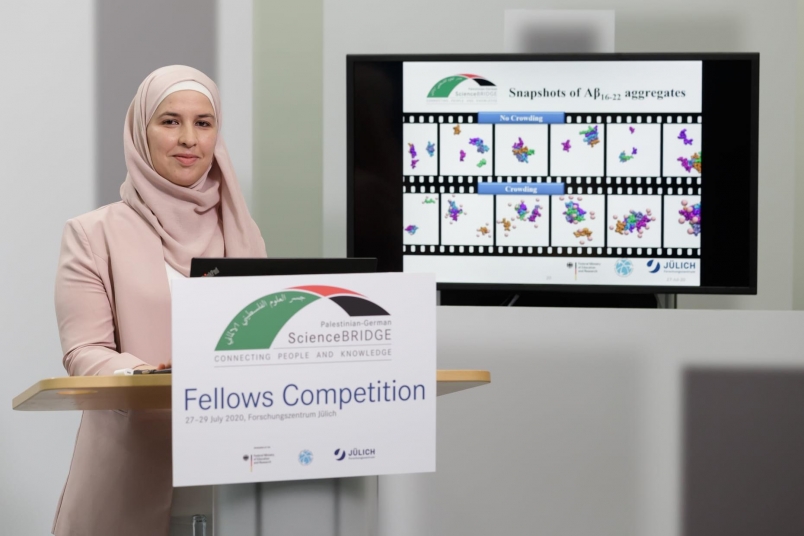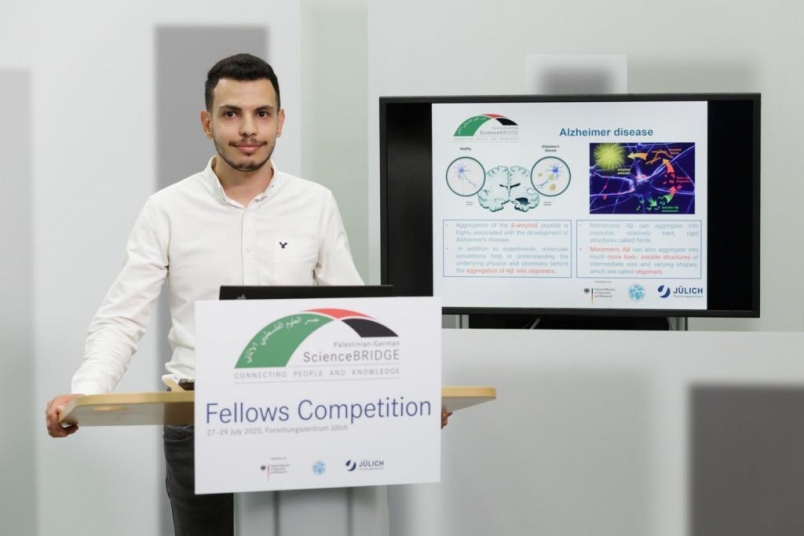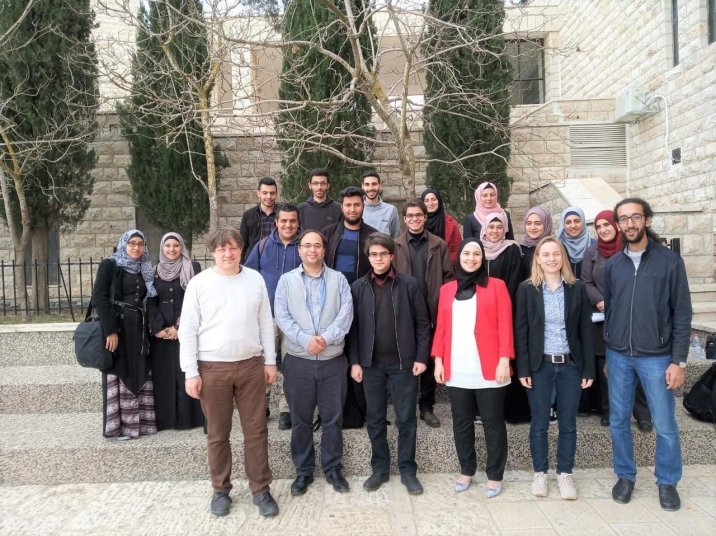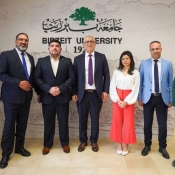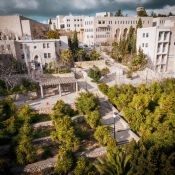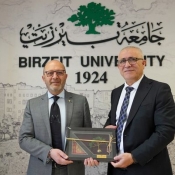New study breaks new ground in the battle against Alzheimer’s
Alzheimer's disease has puzzled researchers for generations. Despite the medical advancements that have been made in the past few decades, stopping the gradual deterioration of brain tissues associated with the disease has remained an obstacle with no clear way to overcome. That will soon change, however, with the publication of a study in which Birzeit University faculty and alumni shine a light on the mechanics of Alzheimer’s development.
In a first-of-its-kind study, Heba Fatafta and Mohammed Khaled, both Birzeit University alumni, and Abdallah Sayyed-Ahmad, a professor of physics, teamed up with Michael Owen, of the University of Miskolc, and Brigit Strodel, of Heinrich Heine University Düsseldorf, to perform molecular-dynamic (MD) simulations on amyloid-β42 peptides, which can form aggregates within neurons whose accumulation is one of the main features of Alzheimer's disease.
Appearing in “Proceedings of the National Academy of Sciences of the United States of America - PNAS,” the study details how the researchers performed 24-micro-second simulations to explore how the amyloid-β42 peptide becomes a dimer “both in solution and in the presence of a model lipid bilayer,” including six lipid types, to simulate the membrane of neurons.
What sets this study apart from previous ones, the authors argue, is that the MD simulations are performed for a longer period — by an order of magnitude — and that the MD simulation includes a lipid bilayer that comprises six lipids.
With these breakthrough configurations, the researchers determined that Aβ42 becomes a dimer both in an aqueous solution and in the substitute neuron membrane. In the solution, the dimerization of Aβ42 showed a “coil-to-β transition,” which the authors note constitutes the first stage towards the aggregation of amyloid peptides within neuronic cells. The configuration of the dimer, the authors add, is similar in some aspects to the β-sheets “found in the U-shaped Aβ42 amyloid fibrils.” Such a result is the first of its kind, they note, and could only be yielded with the correct simulation period and the suitable force field.
Entitled “Amyloid-β peptide dimers undergo a random coil to β-sheet transition in the aqueous phase but not at the neuronal membrane,” the study brings science a step closer to clarifying the mechanisms of amyloid aggregation, opening the door for the possibility of developing new medications to limit its accumulation in the brain and limiting the chances of developing Alzheimer’s disease.
To read full study, here.
About Birzeit University’s alumni
Hebah Fatafta completed her bachelor’s degree in physics in 2009 and master’s in physics in 2013, both from Birzeit University. She worked as a faculty member at the Department of Physics from 2014 to 2018. She left Birzeit to join Jülich Research Center, where her research is focused on studying the simulations of amyloid beta in neurons. Throughout her academic journey, Fatafta has won multiple scholarships, including one from the Palestine Academy for Science and Technology to continue her Ph.D. (2018-2021); a scholarship from Birzeit University’s Department of Physics to continue her master’s degree, and the Mousa Nasir Scholarship to continue her bachelor’s degree. In 2020, Fatafta received an award for best research by the Palestine Academy for Research and Technology.
Mohammad Khaled completed his bachelor’s and master's degrees in physics, both from Birzeit University, in 2016 and 2019, respectively. He enrolled in Jülich Research Center in 2020, where he researches molecular dynamics simulation and Markov state models analysis. He won a number of scholarships, including one from the Palestine Academy for Research and Technology to complete his Ph.D. (2020-2023), as well as a scholarship from Birzeit University’s Department of Physics to complete his master’s degree.

